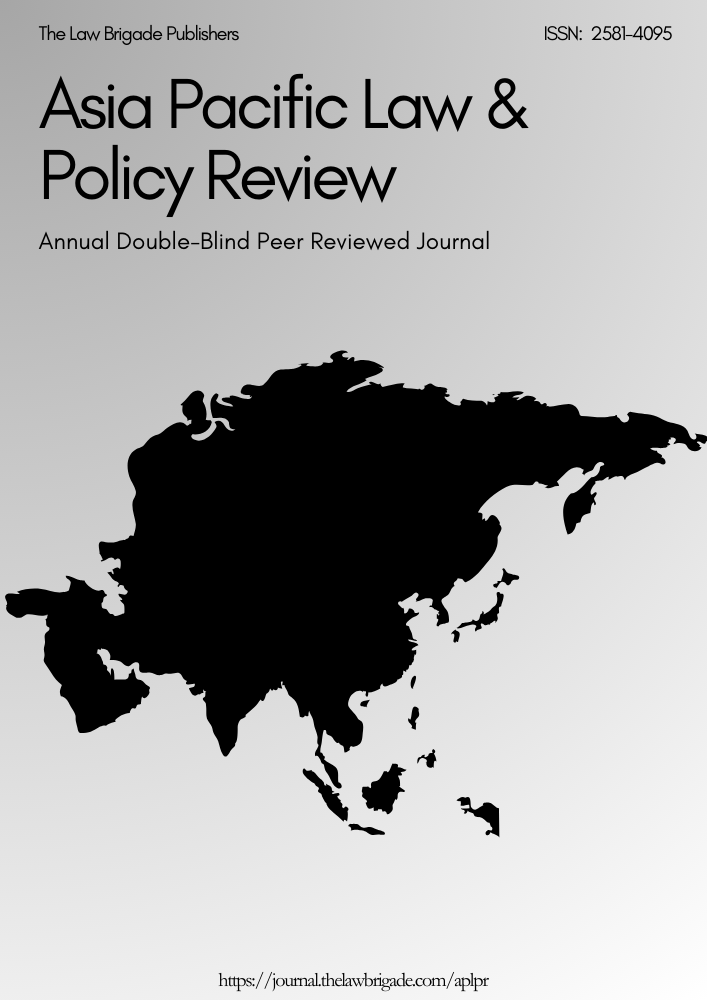MOB LYNCHING IN INDIA: A CRITICAL ANALYSIS OF LAW AND POLICY
Keywords:
Lynching, Unlawful Assembly, Horrendous, MobocracyAbstract
The chapter of Human Rights has been a hot topic over the period of time not only in India but all across the globe. They are the minimum rights that are available to a human being right from the time when he is in the womb of his mother. These rights cannot be snatched or waived as it is impossible for a person to live without them. One example of Human Rights violation is ‘Mob Lynching’. It is a kind of ‘punishment’ in form of killing that is dictated by an unlawful assembly comprising of people with malafide intentions, upon a person, who is accused of committing a crime or anything like that. Supreme Court of India has termed it as ‘horrendous acts of mobocracy’ describing the injustice that is inflicted upon the sufferer. The research question in the article revolves around the state of mind of the culprits while committing these kinds of crimes and the sufficiency of laws governing those, including remedies that are prolific for stopping these aggressors. Research Methodology is doctrinal including the principles of applied and fundamental research. Literature review includes a perusal of articles written by authors mentioning their views in a profound manner.
Downloads
References
i Dr. SK Kapoor, International Law and Human Rights 806 (19th ed. 2014)
ii These rights include Right to live, face trial, get a lawyer of your choice etc.
iii Article 20(1) of the Indian Constitution
iv It means let the other side be heard as well.
v Article 20(3) of the Indian Constitution which means and includes that no one can be compelled to be a witness
against himself in any case.
vi Based on the common law maxim nemo debet bis vexari , Article 20 (2) of the Indian Constitution means and
includes that no one can be prosecuted and punished more than once for the same offence.
vii UDHR came into force on 10 December, 1948 and talks about universal protection of Human Rights.
viii Ankita Ramgopal, Mob lynching in India: where does the buck stop?, The Invisible Lawyer (Feb 20, 2020),
https:/lawyerscollective.org.
ix In Maneka Gandhi vs. U.O.I, the Supreme Court of India has said that the procedure established by law to
deprive a person of his right to life and personal liberty must be just, fair and reasonable.
x Mahendra Pal Singh, VN Shukla’s Constitution of India, 210 (13th
ed. 2017)
xi Human Rights Courts.
xiiSeventh report of UP State Law Commission on Mob Lynching along with draft bill of Uttar Pradesh Combating
of Mob Lynching Bill, 2019, http://upslc.upsdc.gov.in/MediaGallery/7thReport.pdf
xiii Writ Petition (Civil) No. 754 of 2016
xiv https://economictimes.indiatimes.com/news/politics-and-nation/committee-to-suggest-necessaryamendments-in-ipc-crpc-to-curb-mob-lynching/articleshow/72364528.cms (last accessed on 18/8/2020)
xv Vishakha vs. State of Rajasthan AIR 1997
xvi Minerva Mills vs. Union of India AIR 1980
xvii AIR 1992 1 SCC 558
xviii AIR (2011) 7 SCC 547
xix AIR (2015) 3 SCC 467
xx AIR (2011) 6 SCC 405
Downloads
Published
Issue
Section
License

This work is licensed under a Creative Commons Attribution-NonCommercial-ShareAlike 4.0 International License.
License Terms
Ownership and Licensing:
Authors of research papers submitted to any journal published by The Law Brigade Publishers retain the copyright of their work while granting the journal specific rights. Authors maintain ownership of the copyright and grant the journal the right of first publication. Simultaneously, authors agree to license their research papers under the Creative Commons Attribution-ShareAlike 4.0 International (CC BY-SA 4.0) License.
License Permissions:
Under the CC BY-SA 4.0 License, others are permitted to share and adapt the work, even for commercial purposes, provided that appropriate attribution is given to the authors, and acknowledgment is made of the initial publication by The Law Brigade Publishers. This license encourages the broad dissemination and reuse of research papers while ensuring that the original work is properly credited.
Additional Distribution Arrangements:
Authors are free to enter into separate, non-exclusive contractual arrangements for distributing the published version of the work (e.g., posting it to institutional repositories or publishing it in books), provided that the original publication by The Law Brigade Publishers is acknowledged.
Online Posting:
Authors are encouraged to share their work online (e.g., in institutional repositories or on personal websites) both prior to submission and after publication. This practice can facilitate productive exchanges and increase the visibility and citation of the work.
Responsibility and Liability:
Authors are responsible for ensuring that their submitted research papers do not infringe on the copyright, privacy, or other rights of third parties. The Law Brigade Publishers disclaims any liability for any copyright infringement or violation of third-party rights within the submitted research papers.


